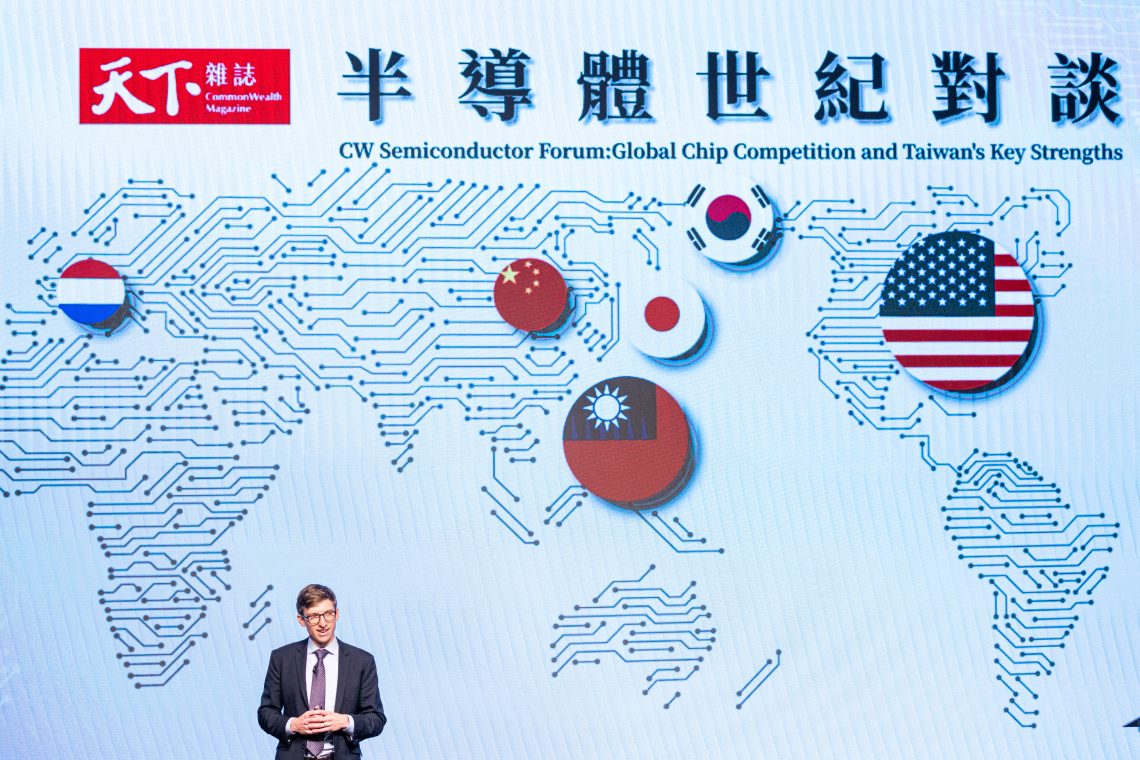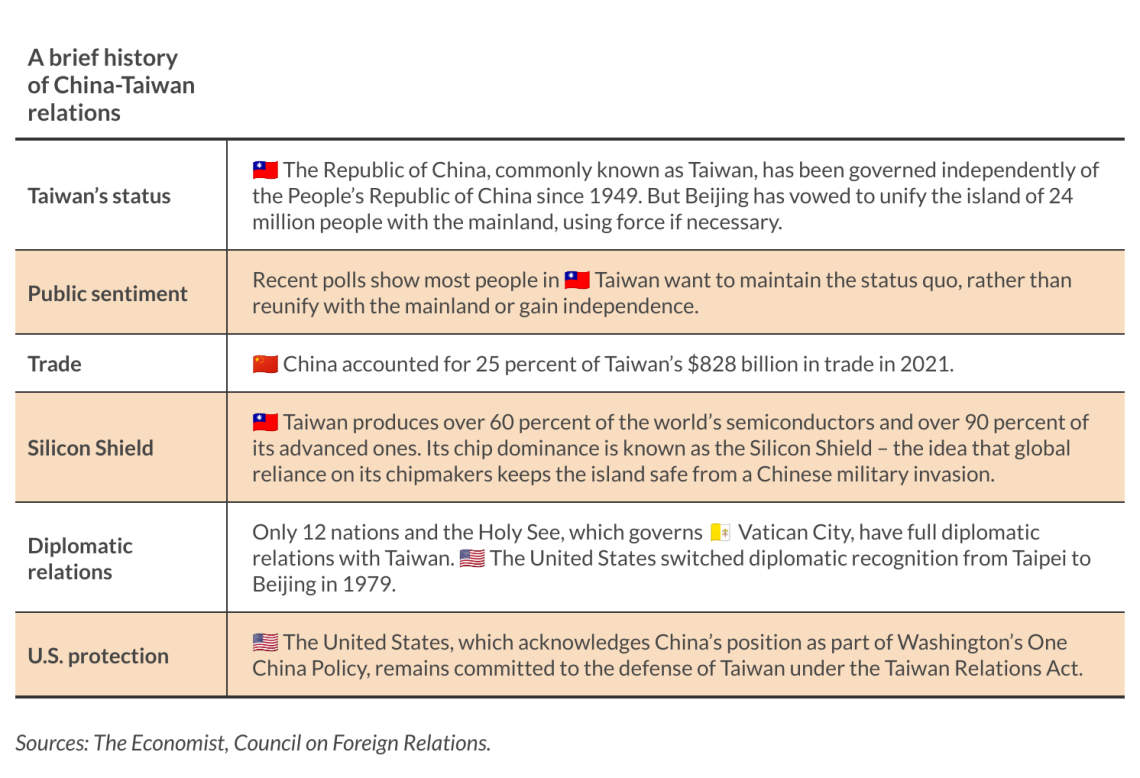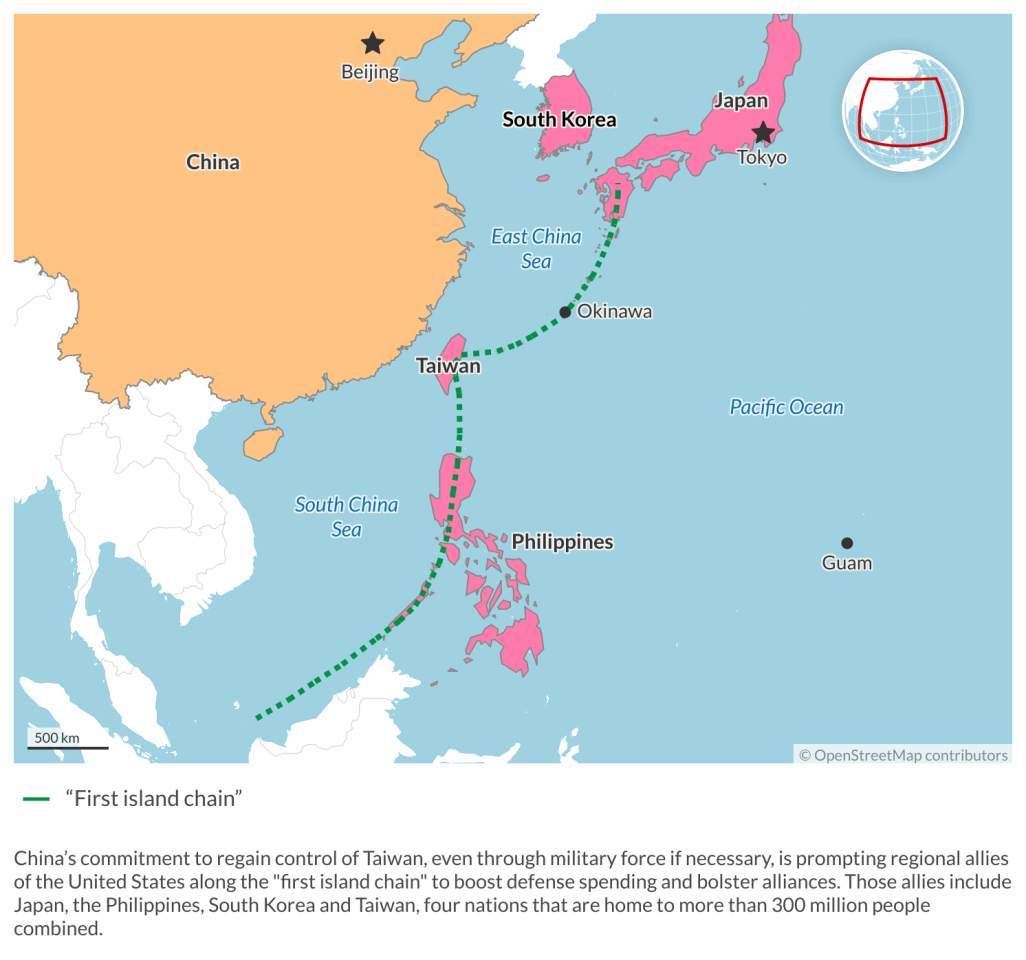Doubts grow over Taiwan’s Silicon Shield

The idea that Taipei’s global dominance in semiconductor production makes a Chinese invasion less likely is hotly debated.

In a nutshell
- China is Taiwan’s biggest trade partner, but that is no guarantee against war
- Less confrontational options are going unexplored amid rising political tension
- China and the United States are seeking greater self-sufficiency in chipmaking
The world’s most sophisticated semiconductor supply chain may come under threat as tensions rise across the Taiwan Strait.
In 2005, Beijing opened the floodgates of high-tech economic engagement with Taipei, prompting bilateral trade to flourish for more than a decade. Taiwan became the world’s top manufacturer of silicon chips, with companies like Taiwan Semiconductor Manufacturing Company (TSMC) at the forefront of semiconductor nanotechnologies. According to market estimates, Taiwan makes 60 percent of the world’s semiconductors and 90 percent of the most advanced ones that power everything from consumer electronics to defense industries.
But shifts are taking place, with nations such as the United States and China seeking to reduce reliance on Taiwanese manufacturers.
Economic incentives drove Taiwanese investors to establish production lines in mainland China and the U.S. Still, the island of 24 million people retains production of the world’s most sophisticated silicon chips.
Beijing’s strategy is one of economic absorption: to bind Taipei so inextricably to mainland China that the Taiwanese independence movement fades into irrelevance. Meanwhile, China would benefit from access to sophisticated high-tech supply chains. This integration became a crucible for the digital revolution fueled by Taiwanese semiconductor innovation. Taiwanese chips, components and software have fueled a global supply chain driving the Fourth Industrial Revolution.
The strategic importance of Taiwan’s semiconductor industry gave rise to the Silicon Shield concept. The theory is that Taipei’s indispensable role in the global digital economy would deter Beijing from going to war to force the island to reunite with the mainland. As tension in the Taiwan Strait grows and China invigorates its Digital China strategy, the concept of Taiwan’s Silicon Shield has been called into question.
The centrality of Taiwan’s semiconductor industry and “golden egg” companies like TSMC prompt two fundamental questions for the stability of the Taiwan Strait and the future of global supply chains. First, is the Silicon Shield simply an unrealistic hope that economic interdependence can prevent war? Second, can Taiwan’s role in global semiconductor supply chains mitigate conflict?
China’s digital strategy
The current regional tension is in stark contrast to the rapprochement that took place during former Taiwanese President Ma Ying-jeou’s 2008-2016 tenure, when economic integration and the benefits of joint research and development created unprecedented engagement between Taiwan and the mainland. Remarkably, this conciliatory period took place at a time when the People’s Liberation Army (PLA) modernized at an extremely rapid pace.
Underpinning the PLA’s modernization drive was the need to fight and win wars under “informationized” conditions, a posture advocated by the late Chinese leader Jiang Zemin two decades ago. Along with burgeoning demand in civilian commercial supply chains, the PLA has developed a colossal appetite for the most sophisticated semiconductors. Ironically, while Taiwan’s semiconductor industry may have served as a Silicon Shield against Chinese aggression, it has also helped transform the PLA into a modern fighting force.
Digital China, a recent report by the Pacific Forum think tank in Honolulu, highlights growing concern in the U.S., Europe and the Indo-Pacific about China’s technology policies under President Xi Jinping. The report tracks Mr. Xi’s strategy over the past decade and its acceleration during the Covid-19 pandemic. The report concludes that Digital China is designed to give China a competitive edge over the West through the digital transformation of rules, institutions and infrastructure.
President Xi seeks to challenge what he views as a hegemonic global system anchored to the status quo with Taiwan’s semiconductor industry at its heart. This has deep implications for great power competition, China’s development and the norms that underpin the international rules-based system. Notably, President Xi is pursuing innovation not only to foster Beijing’s rise, but also to challenge the West. The Pacific Forum report further observes that this strategy is a litmus test for China’s ability to nurture digital innovation.
In early March, China’s state media reported that a national effort is taking off to boost China’s semiconductor industry and attract foreign talent. China’s Global Times reported on March 3 that Chinese Vice Premier Liu He had examined integrated circuit companies, chairing a symposium where he called for the mobilization of national resources in the industry’s development, and vowing to recruit foreign experts to achieve technology breakthroughs.
Vice Premier Liu’s mobilization call heralds renewed initiatives within the recent National People’s Congress, where President Xi gave another boost to the domestic semiconductor industry. The nomination of key figures in China’s semiconductor sector as delegates to the Congress and the China National People’s Consultative Conference underscores a shift in emphasis in recent years away from internet entrepreneurs.
Facts & figures
To counter tightening sanctions by the U.S., a campaign to rejuvenate the Chinese semiconductor sector has emerged. Sanctioned company Yangtze Memory Technologies Co. (YMTC) received a $7 billion capital boost from state-backed investors, nearly doubling its registered capital to over 105 billion yuan ($15 billion).
Taiwan’s centrality in semiconductors has prompted the U.S. and its allies to also develop countermeasures. The offshoring of TSMC production lines to the U.S. is a hedge against possible threats to the semiconductor fabrication base in Taiwan.
Taiwan’s political opposition, the Kuomintang (KMT), has suggested that a brain drain to places like the U.S. state of Arizona is damaging the country’s Silicon Shield. A new TSMC production line opened by President Joe Biden in Phoenix has already been described as a “Little Taiwan.” Opposition legislator Chiu Chen-yuan recently raised concerns that Taiwan’s semiconductor industry was being hollowed out. Rupert Hammond-Chambers, the president of the Taiwan-U.S. Business Council, has also warned that international investors exiting Taiwan could increase the likelihood of an attack by China.
Taiwan’s Economic Affairs Minister Wang Mei-hua countered that TSMC has a “complete supply chain in Taiwan,” difficult to replicate, and that the most advanced technology would remain on the island.
This debate mirrors the geopolitical divide that may force Taiwanese companies to choose sides between China or democracies. Will they embrace the next phase of Digital China or diversify through offshoring in Japan, the U.S., Europe and the Association of Southeast Asian Nations?
Facts & figures
Scenarios
If the mainland were to attack Taiwan – either with an amphibious invasion or with a missile barrage – TSMC could cease operations, possibly permanently, depending on the nature of the war. Given both U.S. and Chinese dependence on TSMC’s chip fabrication capabilities, and Taiwan’s current dominance, world supply chains in high-tech goods would be heavily damaged for several years.
China’s economy would also suffer, but any decision to force Taiwan to unify with the mainland would ultimately be driven by politics, not economics. Given the integrated nature of TSMC’s production capabilities in the U.S. and Europe, a global recession in the semiconductor market and a wider economic slowdown would ensue.
Some worry about China specifically targeting Taiwanese semiconductor plants to disable the island’s ability to make chips altogether. In this unlikely event, China’s ability to produce silicon chips would have to approach parity with TSMC’s. It would also have to be supported by an intricate and secure independent supply chain. U.S. and Taiwanese war games have reportedly played out scenarios that envisage the sabotage of fabrication plants and the evacuation of specialist engineers to offshore production facilities.
Three main scenarios are worth watching.
One is that war is coming. Former U.S. deputy national security advisor Matt Pottinger has recently dismissed the idea that Taiwan’s Silicon Shield would deter China. Rather, he argues that Taiwan’s coveted preeminence in semiconductors serves as a casus belli for hardliners in Beijing. In this scenario, the temptation to seize Taiwan’s semiconductor sector and achieve digital hegemony would only embolden Beijing to invade the island. This is the second most likely scenario and accepts the premise that China and the U.S. are preparing for war before 2027.
Another is that cooperation will prevail. Richard Cronin, in a Stimson Centre study of Taiwan’s Silicon Shield, has suggested that the U.S. could lift some sanctions and export bans against China in return for a commitment from Beijing to adopt a less threatening posture. This scenario would require the Digital China strategy to become a more cooperative than competitive gambit. This is the least likely scenario. China has continued to build its missile arsenal targeting Taiwan and has consistently refused to discuss military deescalation with Taiwan.
There may be a third way for Taiwan to mitigate the conflict with China and keep the digital golden goose: accepting Mr. Xi’s Digital China vision (with security caveats) while also spreading semiconductor production lines around the globe. This would perpetuate Taiwan’s crucial role in the global economy and help ease tensions in the Taiwan Strait. This is the most likely scenario.






